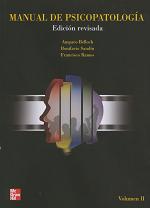Libros relacionados
 |
San Francisco Javier Entre Dos Continentes. Arellano/ Gonzalez A. / Herrera/ (Eds). Iberoamericana Vervuert |
 |
Manual de Psicopatología Vol. 2 (Edición Revisada) Belloch, Amparo / Sandín, Bonifacio / Ramos, Francisco Mc Graw Hill Educacion |
 |
Manual de Psicopatología Vol. 1 (Edición Revisada) Belloch, Amparo / Sandín, Bonifacio / Ramos, Francisco Mc Graw-Hill Companies, Inc. |
 |
Psicología del Mexicano: Descubrimiento de la Etnopsicología Díaz-Guerrero, Rogelio Trillas S.A., Editorial |
 |
Atmóferas Creativas: Juega, Piensa y Crea Betancourt, Morejón, Julián / Valadez Sierra, María de los D Manual Moderno, Editorial, S.A. de C.V. |
 |
How To Do Research: 15 Labs For The Social & Behavioral Sciences Gaultney, Jane / Peach, Hannah Sage Publications, Inc. |


|
Título: Feynman Lectures On Physics. The. (3 Vol. 1 Supl.) | |
| Autor: Feynman/ Leighton/ Sands. | Precio: $3960.00 | |
| Editorial: Pearson/Addison Wesley | Año: 2006 | |
| Tema: Psicologia, Conocimiento, Divulgacion | Edición: 1ª | |
| Sinopsis | ISBN: 0805390456 | |
| This revised edition of Feynman's legendary lectures includes extensive corrections Feynman and his colleagues received and Caltech approved. This boxed set provides Volumes 1-3 together with Feynman's Tips on Physics making this the complete and definitive set of The Feynman Lectures on Physics. For all readers interested in physics.
Richard P. Feynman was born in 1918 in Brooklyn and received his Ph.D. from Princeton in 1942. Despite his youth, he played an important part in the Manhattan Project at Los Alamos during World War II. Subsequently, he taught at Cornell and at the California Institute of Technology. In 1965 he received the Nobel Prize in Physics, along with Sin-Itero Tomanaga and Julian Schwinger, for his work in quantum electrodynamics. Dr. Feynman won his Nobel Prize for successfully resolving problems with the theory of quantum electrodynamics. He also created a mathematical theory that accounts for the phenomenon of superfluidity in liquid helium. Thereafter, with Murray Gell-Mann, he did fundamental work in the area of weak interactions such as beta decay. In later years Feynman played a key role in the development of quark theory by putting forward his parton model of high energy proton collision processes. Beyond these achievements, Dr. Feynman introduced basic computational techniques and notations into physics, above all, the ubiquitous Feynman diagrams that, perhaps more than any other formalism in recent scientific history, have changed the way in which basic physical processes are conceptualized and calculated. |
||
Librería Bonilla SA de CV © Todos los derechos reservados. 2019
Última actualización: Jul 2019




